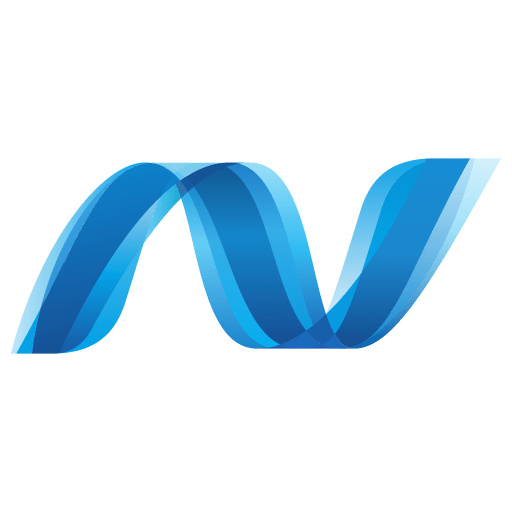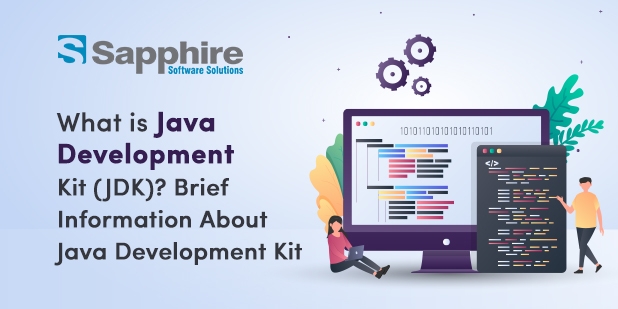The Java platform provides a mechanism for building and distributing application software in cross-platform computing environments. Java is used on many computing platforms, from embedded devices and mobile phones to supercomputers. We are an industry-leading Java development company providing the most dependable and user-centric product engineering services. Several Java tools simplify the entire Java development, testing, and deployment process. Here’s a list of our top 10 Java tools, including their features and download links.
+
Best Java Tools for Development, Code Coverage, Profiler, and Review
1. Git:
Git is one of the most essential tools for Java developers. Git is a DevOps technology used to manage source code. It is free to use and provides an open-source version control system to effectively manage small to large and complex projects. Git keeps track of source code revisions, allowing multiple engineers to collaborate on non-linear development.
Features:
- – Retains a record
- – Free and available source
- – Supports non-linear development
- – Performs backups
- – Scalable
- – Facilitates cooperation
- – Branching is simple
- – Distributed construction
2. Jenkins:
Jenkins is a Java-written, open-source automation server. It is often used in projects to achieve continuous integration and continuous delivery.
Features:
Jenkins is a platform-independent, self-contained Java software designed to run with Windows, Mac OS, and Unix-like operating system packages.
Jenkins is easy to install and set up using its web interface, which includes error checking and an integrated help facility.
- – Available Plugins: The Update Center provides hundreds of plugins that integrate with every tool in the CI and CD toolchains.
- – Extensible: Jenkins can be extended through its plugin architecture, giving it practically limitless capabilities.
- – Simple Distribution: Jenkins can spread work effectively over several computers for quicker builds, tests, and deployments on different platforms.
- – Jenkins is an open-source resource that is supported by a large community.
3. Apache Maven:
Apache Maven is a project management and builds tool. Maven can handle the building, reporting, and documentation of a project from a centralized data source. It is based on the idea of ​​the Project Object Model (POM). An additional key feature of Maven is dependency management.
Due to the extensive use of third-party libraries in our Java applications, it can be challenging to manually manage each JAR file and its dependencies. Maven solves this problem by automatically downloading the JAR for you.
Features:
- – Simple project configuration that adheres to best standards to launch a new project or module in seconds
- – Facilitates the creation of plugins using Java
- – Immediate access to new features with few additional setups
- – Ant tasks outside of Maven for dependency management and deployment
- – Publication on release management and distribution
- – It promotes the use of a common repository for JARs and other dependencies
- – Versioning administered by Maven
- – Maven offers conventions
- – Extensibility, reusability
- – Better quality in delivery
- – Less time
4. IntelliJ Idea:
IntelliJ IDEA is a versatile IDE focused on Java programming. It provides comprehensive support for building online, mobile and hybrid applications.
Features:
- – It compares source code across all project files and programming languages
- – It provides a list of the most relevant symbols for the present situation.
- – It enables translingual refactoring
- – Automatically detects duplicate code parts
- – Inspections and immediate repairs
- – Editor-centric environment
- – It facilitates the usage of static methods or constants
5. JIRA:
JIRA is an essential instrument in the realm of Agile development. Jira is used for tracking bugs, tracking issues, and managing projects.
Agile development methodologies, such as Sprint and Scrum, enable the creation of Sprint cycles and the efficient tracking of software development progress.
Features:
- – It supports roadmap requirements: Jira’s tools allow users to sketch the big picture, convey plans, and relate the roadmap’s larger objectives to the team’s daily activities.
- – Excellent for agile: The software provides a unified view of all user stories and can create data needed for multiple sprints, such as burndown charts, sprint velocities, etc. In addition, users can manage and monitor tickets across sprints and releases. Team effort and job allocation.
- – The problem and project tracking software integrate with several well-known third-party applications. For instance, connectivity with Hipchat and Slack simplifies the communication of concerns and the response to alerts. More than three thousand applications are available on the Atlassian Marketplace to increase the software’s functionality.
- – Extremely adaptable: Jira enables users to create any problem. Users may build and modify a variety of items, including tables, forms, timelines, reports, and fields. Additionally, they can tailor processes to meet the needs of every firm.
- – Developers, project managers, engineers, managers, and other non-technical business people may use this program.
6. JUnit:
JUnit is an open-source tool for unit testing the Java programming language. It is a vital instrument for test-driven development and deployment.
Features:
- – Data input preparation and setup/creation of fictitious items
- – Filling databases with a specified set of known data
- – It includes annotations so that fixtures may be executed before or after each test class
- – JUnit supports the development and execution of tests
- – It offers annotations for test method identification
- – Provides statements for testing anticipated result
- – JUnit tests enable quicker coding, which improves the quality
7. Gradle:
Gradle is a Java-based project automation tool. It extends the functionality of Apache Ant and Apache Maven. It also serves as the default Android platform development tool.
Gradle introduces a domain-specific language (DSL) based on Groovy instead of the XML used by Apache Maven to declare project configuration, making it easier to configure project dependencies and customize them based on your needs goes.
It combines the most practical elements of various construction equipment. It has the flexibility and control of Ant, the dependency management of Ivy, the preference for convention over configuration, and the plugins of Maven, as well as the Groovy DSL on top of Ant. This makes it one of the top 10 Java development tools.
Features:
- – Better modeling of dependencies with the aid of the Java Library plugin decreases the size of the build classpath.
- – It has a remote build cache with practical administration tools
- – Gradle Wrapper enables the execution of Gradle builds on uninstalled computers
- – It enables both partial and multi-project builds
- – It readily conforms to any structure
- – Its intelligent classpath prevents wasteful compilation when a library’s binary interface has not changed.
8. Ehcache:
Ehcache is a free, standards-based caching solution for the Java programming language. It is an established, powerful, and feature-rich tool that can be combined with other popular libraries and frameworks.
Features:
- – Ehcache attempts to preserve a tiny footprint to make applications as lightweight as feasible.
- – Redesigned API using Java generics and Cache interactions
- – API is simple to use
- – Scalable to a large number of caches
- – Enables integration of box Spring Caching and Hibernate with Java. cache
9. Cobertura:
Cobertura is a free Java application that computes the proportion of code tests accessed. It may also determine whether portions of the Java application are not well tested.
Features:
- – It permits line and branch coverage in a comprehensive tree view
- – View source code with line coverage highlighted in color
- – Start Scala, Eclipse JUnit, and PDE in covered mode
- – It eliminates irrelevant courses and bundles.
- – Instruments Java bytecode after the compilation
- – Enables the generation of HTML or XML reports
- – Display the proportion of covered lines and branches for each class, package, and the overall project
10. Apache JMeter:
JMeter is a free tool for load testing. It is intended to load functional test behaviour and evaluate website performance.
Features:
- – JMeter enables to load and performance testing for several server types
- – This load-testing tool stores test plans in XML format, enabling users to construct test plans using a text editor.
- – The tool may also be used for automated and functional application testing.
- – Data analysis and visualization plugins permit customization and extensibility
- – Functions should provide dynamic input for data manipulation testing
Conclusion:
There are so many manufacturers and open-source contributors in the Java ecosystem that it is impossible to compile a list of Java programming tools and technologies without excluding many significant firms and projects. In general, this list of Java programming tools should provide a sufficient understanding and help you become a competent programmer. Also, if you want to hire java developers in India, Reach out to us.



















































